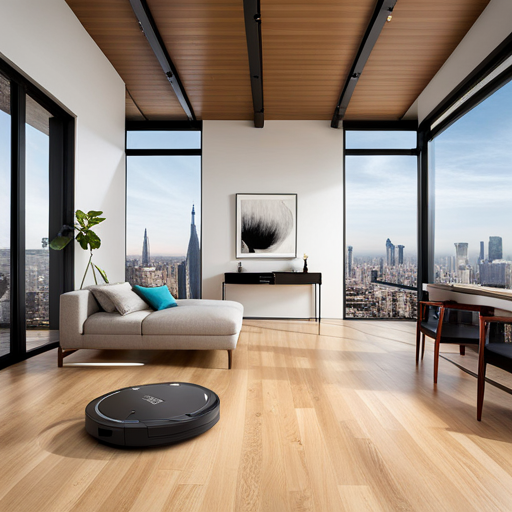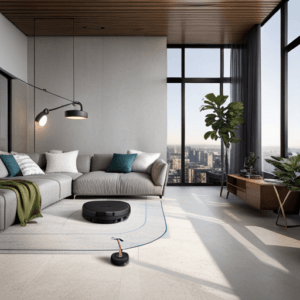Are you considering getting a robot vacuum but confused about the mapping feature? You’re not alone. In this comprehensive guide, we’ll dive into the world of robot vacuums and mapping technology.
You might be wondering, do all robot vacuums have mapping capabilities? How does mapping work in robot vacuums, and is it essential for efficient cleaning? What are the different types of mapping technologies available in robot vacuums, and how do they compare?
We’ll explore these questions and more as we uncover the benefits of mapping in robot vacuums. Whether you’re a tech enthusiast looking for the latest innovations or a homeowner seeking a convenient cleaning solution, this guide will provide valuable insights into the role of mapping in the world of robot vacuums. So, let’s embark on this journey to demystify the mapping feature in robot vacuums and make an informed decision for your cleaning needs.
How Do Robot Vacuums with Mapping Technology Work?
Robot vacuums with mapping technology work by using a combination of sensors, cameras, and lasers to navigate and map the layout of a home. These sensors and cameras collect data on the room’s dimensions, obstacles, and furniture, which is then used to create a virtual map of the space. This map is then used by the robot vacuum to efficiently clean the entire area without missing spots.
The robot vacuum uses the created map to determine the most efficient cleaning path, avoiding obstacles and navigating around furniture. Some advanced models can even create multiple floor maps for multi-level homes and use AI algorithms to optimize cleaning routes based on the home’s layout. This technology allows the robot vacuum to clean more effectively and with less supervision, making it a valuable tool for busy households.
Benefits of Robot Vacuums with Mapping Features
Robot vacuums with mapping capabilities offer several benefits that make them a valuable addition to any home. Firstly, these vacuums can efficiently navigate and clean large areas without missing spots, thanks to their ability to create and follow a detailed map of the cleaning area. This results in thorough and consistent cleaning, ensuring that no areas are overlooked during the cleaning process.
Furthermore, robot vacuums with mapping features can be programmed to clean specific areas or rooms, allowing for targeted cleaning where it’s needed the most. This level of customization provides convenience and flexibility, especially in homes with varying floor layouts or specific cleaning requirements.
Are There Any Limitations to the Mapping Abilities of Robot Vacuums?
Robot vacuums with mapping technology have made significant advancements in navigating and cleaning homes, but there are still some limitations to their mapping abilities. One common limitation is their ability to accurately navigate in low-light conditions or complete darkness, as this can affect the accuracy of their mapping. Additionally, highly reflective surfaces or extremely dark floors can sometimes pose challenges for robot vacuums in creating precise maps of the area.
Furthermore, some robot vacuums may struggle with mapping in homes with complex layouts or a high number of obstacles, leading to potential inaccuracies in their cleaning patterns. Additionally, changes in furniture placement or the introduction of new obstacles may require the robot vacuum to remap the area, which can impact its efficiency.

Understanding the Future of Mapping Technology in Robot Vacuums
As technology continues to advance, the future of mapping technology in robot vacuums looks promising. With ongoing developments in artificial intelligence and machine learning, we can expect robot vacuums to become even more adept at navigating and mapping their surroundings. These advancements could lead to more efficient cleaning routines and improved adaptability to different home environments. Additionally, the integration of advanced sensors and cameras may enable robot vacuums to create more detailed and accurate maps of the areas they clean. This could result in better overall cleaning performance and the ability to navigate through complex layouts with ease. Furthermore, advancements in mapping technology may lead to enhanced connectivity and integration with smart home systems, allowing users to have greater control and customization options for their robot vacuums.
The Bottom Line: Choosing the Right Robot Vacuum for Your Needs
When choosing the right robot vacuum for your needs, consider the size and layout of your home as well as the specific cleaning requirements. Some robot vacuums with mapping technology are better suited for larger homes with multiple rooms, while others may be ideal for smaller spaces with simpler floor plans.
Additionally, think about the type of flooring in your home, whether it’s carpet, hardwood, or a combination of both, as this can impact the cleaning performance of the robot vacuum. Furthermore, consider any specific features you may need, such as pet hair removal, advanced navigation capabilities, or compatibility with smart home systems.
It’s also important to take into account your budget and the ongoing maintenance costs associated with the robot vacuum, including filter replacements and battery life. Lastly, read reviews and compare the mapping capabilities, cleaning performance, and overall user experience of different robot vacuums to make an informed decision.

